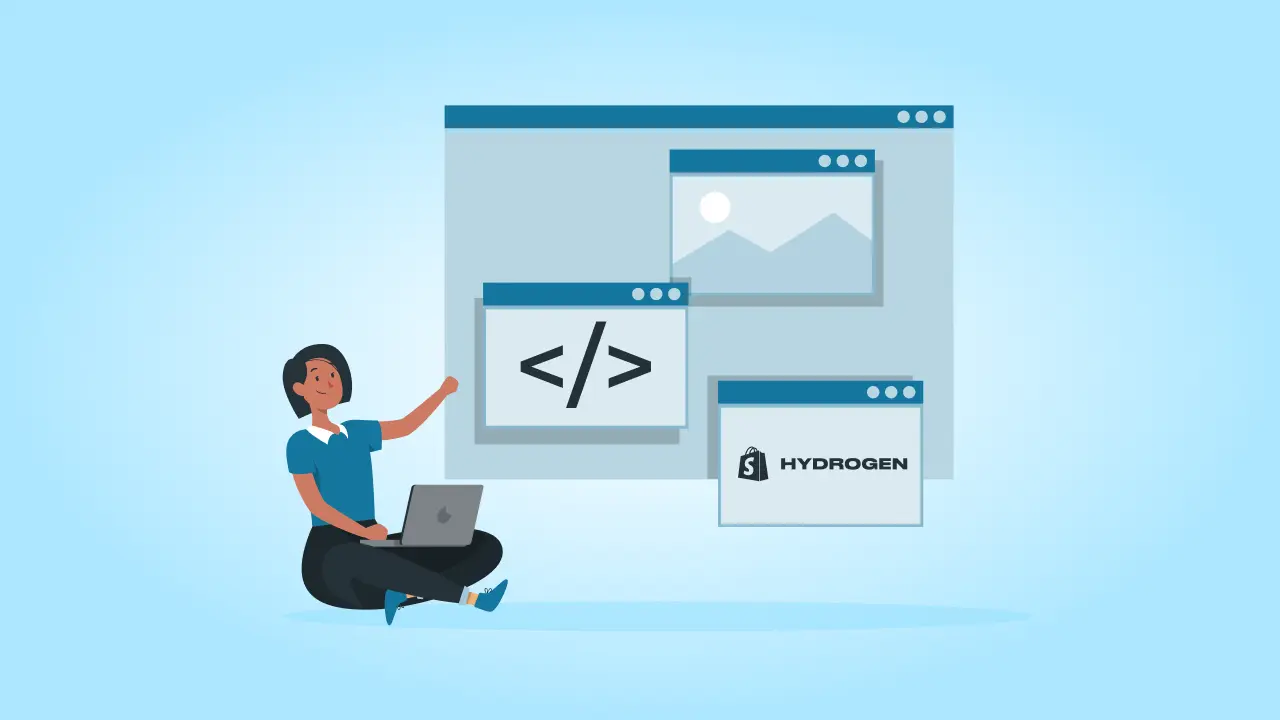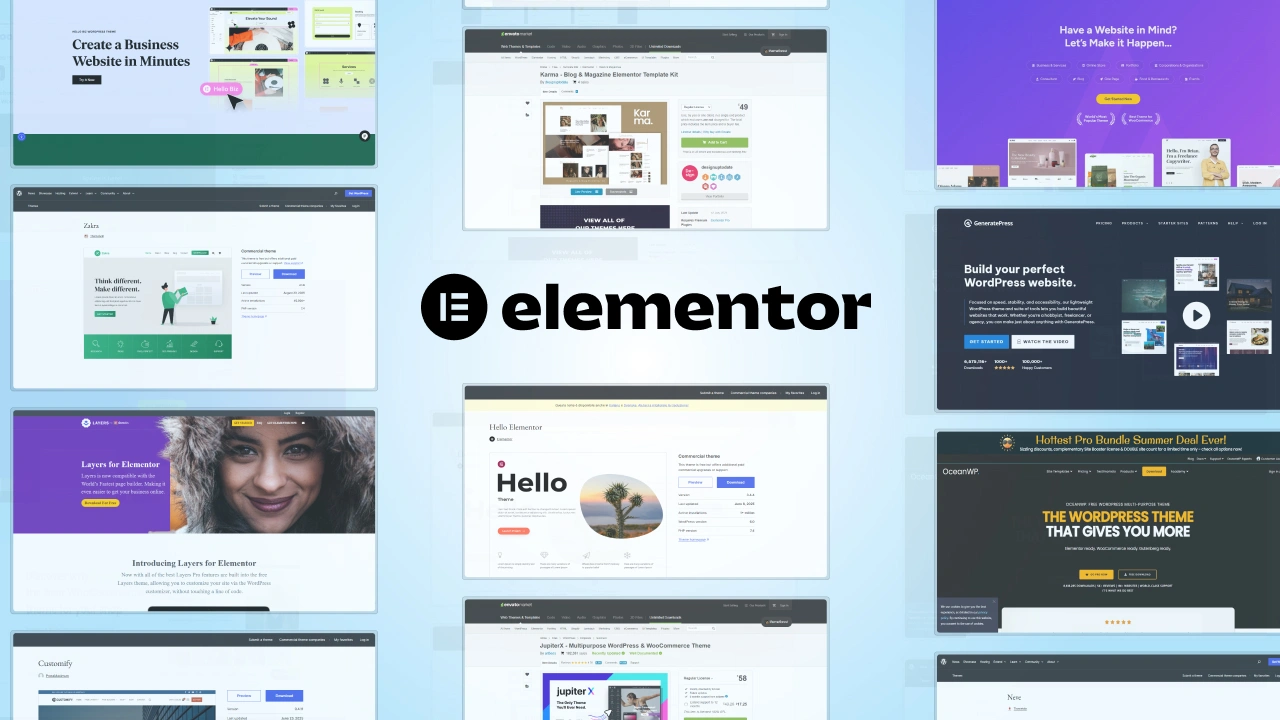Are you looking for a way to elevate your online store and enhance your customers’ shopping experience? Shopify Hydrogen might be just what you need. This innovative framework allows businesses to create custom, high-performing storefronts that stand out in the crowded e-commerce landscape.
With Shopify Hydrogen, you can build a unique online presence tailored specifically to your brand and audience. It leverages headless commerce, meaning you can separate the front end from the back end, resulting in faster load times and a smoother user experience. This flexibility enables you to craft a shopping environment that not only meets your customers’ needs but also reflects your brand’s identity.
In this blog post, we will explore how Shopify Hydrogen can help you achieve your e-commerce goals and transform your online strategy. But before we dive deeper, let’s start with the fundamentals.
What is Shopify Hydrogen?
Shopify Hydrogen framework is designed specifically for building custom e-commerce storefronts on the Shopify platform. Developed with React, Hydrogen provides businesses with the tools to create fast, responsive, and highly personalized online shopping experiences. It empowers developers and business owners to craft unique storefronts that align with their brand identity and customer expectations.
Key Features of Shopify Hydrogen:
- Headless Commerce Architecture: One of the standout features of Hydrogen is its headless commerce capability. This means you can build the front end of your online store separately from the backend services provided by Shopify. This separation allows for greater flexibility in design and functionality, enabling businesses to create truly unique shopping experiences.
- Speed and Performance: Hydrogen is optimized for speed. Its architecture helps ensure that web pages load quickly, which is crucial for retaining customers and improving conversion rates. Faster loading times lead to a better user experience, making it easier for customers to browse and purchase.
- Customization and Flexibility: With Hydrogen, businesses can easily customize their storefronts to reflect their brand. Whether it’s unique layouts, personalized product displays, or tailored user experiences, the framework allows for significant customization without sacrificing performance.
- Component-Based Development: Built on React, Hydrogen uses a component-based approach, allowing developers to create reusable components that can be easily managed and updated. This makes the development process more efficient and helps maintain consistency across the site.
- Integration with Shopify APIs: Hydrogen seamlessly integrates with Shopify’s robust APIs, allowing businesses to leverage the full power of Shopify’s backend while enjoying the freedom to design their front end. This ensures that you can access features like inventory management, order processing, and customer data while maintaining a unique storefront.
- Future-Ready Technology: As e-commerce continues to evolve, Shopify Hydrogen is designed to adapt to future needs. Its foundation on modern web technologies means it can incorporate new features and improvements as they become available, ensuring your online store remains competitive.
Let cmsMinds show you how Shopify Hydrogen can tailor your online shopping experience.
Key Components of Shopify Hydrogen
Now, to fully appreciate what Shopify Hydrogen has to offer, it’s highly important to first understand its key components. These elements work together to create a flexible and powerful framework for building custom e-commerce storefronts.
-
Core Components
At the heart of Shopify Hydrogen are its reusable React components. These components allow developers to build user interfaces efficiently by breaking down complex elements into smaller, manageable pieces. With a library of pre-built components tailored for e-commerce—such as product cards, navigation menus, and checkout flows—developers can quickly assemble a cohesive storefront. This component-based architecture not only streamlines development but also promotes consistency in design.
-
Hooks and Custom Functions
Hydrogen also leverages React hooks, which enable developers to manage state and lifecycle events within their components seamlessly. Hooks like useEffect and useState are essential for handling dynamic data and user interactions. Additionally, Hydrogen allows for the creation of custom hooks that can encapsulate specific functionality, making it easier to manage complex logic and share code across different components.
-
Integration with Shopify APIs
One of the standout features of Shopify Hydrogen is its integration with Shopify’s robust APIs. These APIs provide access to essential e-commerce functionalities, such as product data, customer information, and order management. By utilizing the Storefront API, developers can fetch data in real-time, ensuring that customers always see the most up-to-date information. This seamless integration allows businesses to harness the full power of Shopify’s backend while maintaining a custom frontend experience.
-
Data Management and State Management
Effective data management is crucial for any e-commerce site, and Hydrogen simplifies this process. Hire a dedicated Shopify Developer, that can leverage context providers and state management libraries to handle global state and data flows throughout the application. This ensures that key data—such as shopping cart contents and user preferences—are consistently available across different components. By effectively managing the state, businesses can create a smooth and responsive shopping experience that keeps customers engaged.
Use Cases for Shopify Hydrogen
Shopify Hydrogen is a versatile framework that has been utilized by various businesses to create compelling and unique online shopping experiences. Here are some Shopify Hydrogen examples:
-
Successful Implementations:
Many brands have already embraced Shopify Hydrogen to build their custom storefronts. For instance, Allbirds, known for its eco-friendly footwear, leveraged Hydrogen to create a fast and visually appealing shopping experience that aligns with their sustainability ethos. By utilizing Hydrogen, they were able to integrate their unique design elements while maintaining high performance, resulting in increased customer engagement and sales.
Another notable example is Gymshark, a fitness apparel brand that adopted Hydrogen to enhance their online store’s speed and flexibility. With a focus on a smooth user experience, Gymshark utilized the customization capabilities of Hydrogen to showcase their products dynamically, leading to improved conversion rates.
-
Large Catalogs:
Shopify Hydrogen is particularly advantageous for businesses with extensive product catalogs. The framework’s ability to efficiently manage data and retrieve information from Shopify’s APIs allows for smooth navigation and fast loading times, even with thousands of products. For retailers like Sephora, which offers a wide range of beauty products, Hydrogen enables them to present their vast inventory in an organized and visually appealing manner, enhancing the customer shopping experience.
-
Complex Customizations:
Businesses that require intricate customizations benefit significantly from Shopify Hydrogen’s flexibility. For example, a brand specializing in personalized gifts can utilize Hydrogen to create a unique product customization interface, allowing customers to tailor their purchases to their preferences. This level of personalization, combined with Hydrogen’s performance capabilities, can lead to higher customer satisfaction and loyalty.
-
Dynamic Content and Marketing:
Hydrogen is also advantageous for brands looking to implement dynamic content and marketing strategies. By using real-time data from Shopify’s APIs, businesses can display personalized product recommendations, special offers, and seasonal promotions that cater to individual customer behaviors. This approach is especially beneficial for brands in competitive markets, as it allows them to respond quickly to changing consumer trends and preferences.
-
Headless Commerce Implementations:
Brands looking to implement a headless commerce strategy can leverage Shopify Hydrogen effectively. For instance, a business that wants to integrate an existing content management system (CMS) with their Shopify store can use Hydrogen to create a seamless connection between the two. This allows for greater control over the user experience and content delivery, making it easier to engage customers across different channels.
Challenges and Considerations
While Shopify Hydrogen offers numerous advantages for building custom e-commerce storefronts, it’s essential to be aware of the challenges and considerations that may arise. Understanding these factors can help businesses make informed decisions about their development strategy.
- Potential Challenges:
- Learning Curve: For teams that are new to React or headless commerce, there can be a steep learning curve. Developers need to familiarize themselves with the principles of React and the nuances of the Hydrogen framework, which may require additional training and time investment.
- Complexity of Setup: Setting up a headless architecture can be more complex than traditional Shopify development. This involves configuring the front end to communicate effectively with Shopify’s back end, which can require advanced technical skills and experience. Businesses may need to allocate more resources to the initial setup phase.
- Performance Monitoring: While Hydrogen is optimized for speed, businesses must still actively monitor performance metrics and make necessary adjustments. This requires ongoing attention to ensure that the site remains fast and responsive as the catalog grows and traffic increases.
- Dependency on APIs: Hydrogen relies heavily on Shopify’s APIs for data retrieval and management. Any changes or limitations in the API can impact the storefront’s functionality. Developers need to stay informed about updates and potential changes to the APIs to maintain a smooth user experience.
- Considerations for Choosing Between Hydrogen and Traditional Shopify Development:
- Business Needs and Goals: When deciding between Hydrogen and traditional Shopify development, it’s crucial to evaluate your specific business needs. If you require extensive customization and have unique design requirements, Hydrogen may be the better option. Conversely, if your needs are more straightforward and you want a quicker setup, traditional Shopify may suffice.
- Long-Term Vision: Consider your long-term vision for your online store. If you anticipate significant growth and the need for ongoing enhancements, investing in Hydrogen can provide the scalability and flexibility needed for future development. On the other hand, if you expect your business model to remain relatively static, traditional Shopify might be a more straightforward path.
- Technical Resources: Assess the technical capabilities of your team. If your developers are proficient in React and comfortable with headless architecture, they may find Hydrogen to be a powerful tool. However, if your team lacks experience in these areas, you may need to weigh the potential benefits against the additional time and resources required for training and development.
- Time to Market: For businesses looking to launch quickly, traditional Shopify may offer a faster path to getting an online store up and running. Hydrogen requires more setup and customization, which could delay the launch if resources are limited.
Best Practices for Shopify Hydrogen Development
To maximize the benefits of Shopify Hydrogen and ensure a successful development process, following best practices is crucial. Here are some tips for optimizing performance, maintainability, and architectural design:
-
Optimize Performance:
- Code Splitting: Use code splitting to load only the necessary components for each page. This approach reduces the initial load time and improves performance, especially for larger applications. By leveraging React’s built-in capabilities, you can ensure that users only download the code they need when they navigate to different parts of your site.
- Image Optimization: Implement image optimization techniques to enhance loading speeds. Use responsive images that adapt to different screen sizes, and leverage formats like WebP for better compression. Tools like Shopify’s built-in image CDN can help serve optimized images without sacrificing quality.
- Lazy Loading: Incorporate lazy loading for images and other resources that aren’t immediately visible on the page. This practice defers the loading of off-screen elements until users scroll down, which can significantly enhance the initial page load time.
- Caching Strategies: Utilize caching strategies to improve load times for returning visitors. Implement client-side caching and leverage tools like service workers to cache static assets, reducing the need to fetch data repeatedly from the server.
-
Maintainability:
- Consistent Code Structure: Maintain a consistent code structure throughout your project. Organize components logically, using clear naming conventions and folder structures. This makes it easier for developers to navigate the codebase, understand its architecture, and onboard new team members.
- Documentation: Invest time in documenting your code and development processes. Good documentation helps maintain the project over time, making it easier to understand how components interact and how to extend functionality in the future.
- Version Control: Utilize version control systems like Git to manage changes in your codebase. Regular commits and clear commit messages help track progress and allow for easier collaboration among team members.
-
Design Patterns and Architecture:
- Component Reusability: Embrace a component-driven architecture by creating reusable components. This not only saves development time but also ensures consistency across your storefront. Use props and context effectively to pass data and maintain state across components.
- Separation of Concerns: Follow the principle of separation of concerns by keeping your business logic, presentation logic, and data management distinct. This modular approach enhances maintainability and allows for easier updates and testing.
- State Management: Choose an appropriate state management solution for your application’s complexity. For simpler applications, React’s built-in state management may suffice. However, for more complex interactions, consider using libraries like Redux or Zustand to manage global state effectively.
- Responsive Design: Ensure that your storefront is responsive and provides a great experience across all devices. Use CSS frameworks or utilities that facilitate responsive design, making it easy to adapt your layout for different screen sizes.
Conclusion
If you’re looking to improve your online store, Shopify Hydrogen is worth considering. It offers the flexibility to create a custom shopping experience that can set your business apart from the competition. With its focus on speed and personalization, Hydrogen can help you engage customers and drive sales more effectively.
As e-commerce continues to grow, having the right tools is essential. Shopify Hydrogen could be the key to elevating your online presence and meeting the unique needs of your customers. At cmsMinds, we understand the potential of Hydrogen and are here to help you explore how it can benefit your business and help you achieve your goals.
Explore the benefits of Shopify Hydrogen with the experts at cmsMinds.






